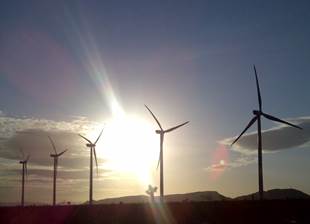Treasurer Joe Hockey and Finance minister Matthias Cormann – no friends of renewable energy – have been accused of setting impossible rate-of-return targets in an updated mandate for the Clean Energy Finance Corporation.
Both ministers have tried to abolish the $10 billion green bank, but have been frustrated by numbers in the Senate. Now, they have found a new way to try and frustrate the CEFC’s operations, by ordering it to nearly treble its targeted returns, but not lift its risk profile.
The CEFC is providing loans to wind and solar farms, wave energy projects, solar thermal heating installations, financing energy efficiency projects and solar leases and solar PPAs, as well as investing in a variety of waste gas and other technologies. So far it has allocated around $930 million to help fund projects worth more than $3.2 billion.
It was previously mandated to achieve the equivalent of the 5-year bond rate – 3.4 per cent – which it was happily doing in its latest year with estimated returns of 6.5 per cent, despite the fact that it had been derided by other Abbott ministers as a “high risk venture.”
Now, Hockey and Cormann have set a new benchmark of the 5-year bond rate plus 4-5 per cent, effectively setting a target of 8.4 per cent. But in setting the challenge of achieving these returns, the nation’s two most senior economic ministers have instructed the CEFC not to lift its risk profile.
Any fund manager or financial analyst, or indeed anyone with a superannuation fund, knows this to be an absurdity.
CEFC chairwoman Jillian Broadbent, a former senior banker and member of the Reserve Bank of Australia, said the new requirements were “outside the scope of normal market opportunities.”
She sent the below letter to the ministers to point out that the CEFC was now being expected to outperform the market “by a considerable margin” – thus requiring the CEFC to find a body of investments that were “inconsistent with traditional market-based principles to deliver out-of-market investment returns.”
The CEFC sent a paper prepared by former Audit Commission head Bob Officer and financial analyst Steve Bishop to give the ministers and their staff an “economics 101” of how markets work, and the correlation between risk and returns. Basically, if you want higher returns, you need to take more risks.
The decision continues the scatter-gun approach of the Coalition towards the CEFC. Originally, it alleged that the CEFC would be making loans in “wild and whacky” investments that “other banks would not touch in a fit”, and then complained when it joined with other banks in a wind farm refinancing, accusing it of “crowding banks out of the market.”
Hockey, who has said he finds the appearance of wind farms “utterly offensive”, has previously said he would repeal loans made by the CEFC, before it was pointed out to him they had a legal mandate, and to do so would further undermine Australia’s sovereign risk.
Broadbent, however, said the CEFC would continue within the spirit of the act, and would take “all reasonable steps” to comply with the new mandate – “even, as all evidence suggests, it will prove highly challenging.”
She also noted that, while the Abbott government still sought to abolish the CEFC, the institution would work to help in its emissions abatement task.
Meanwhile, despite a lot of talk in mainstream papers and elsewhere, and a fair bit of salesmanship from environment minister Greg Hunt, there appears to be no real progress in talks on the future of the renewable energy target. There is hope, however, that a deal can be reached when parliament resumes in 10 days. There is a two week sitting before a long break before the budget sitting.
Still, the problem remains around the numbers. The Abbott government has not budged from cutting the target to 31,000GWh. Hunt said on radio yesterday this represents a “doubling” in renewable energy, referring to the 16,000GWh already built. But, in effect, it represents a 40 per cent cut in the remaining task to 2020 from 25,000GWh to 15,000GWh.
Labor may agree to a cut to as low as 35,000GWh, meaning another 19,000GWh to be built between now and 2020 (so just a 22 per cent cut), but will require other concessions, such as higher targets in interim years and possibly an extension of the “back end” of the target to beyond 2030.









